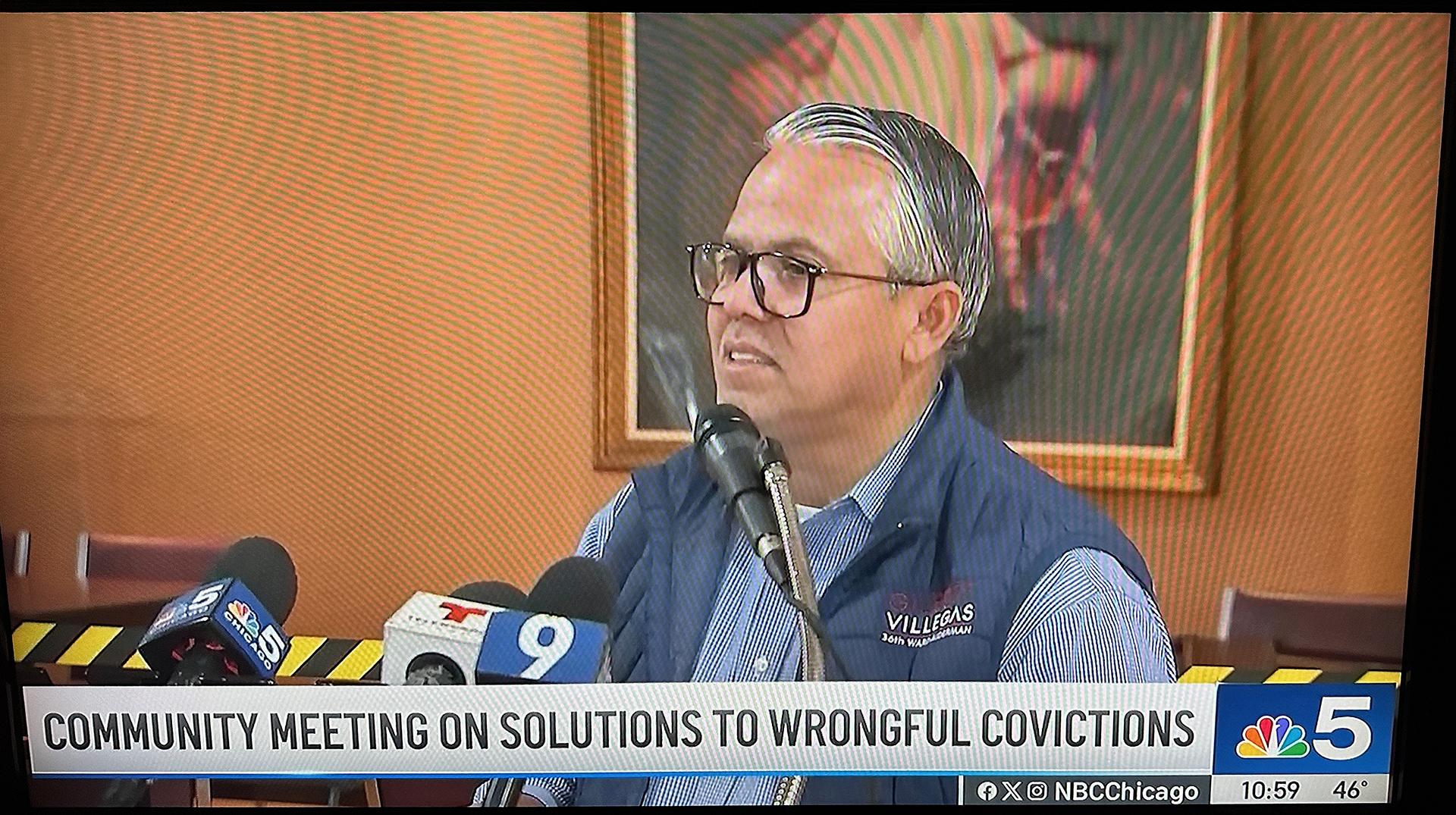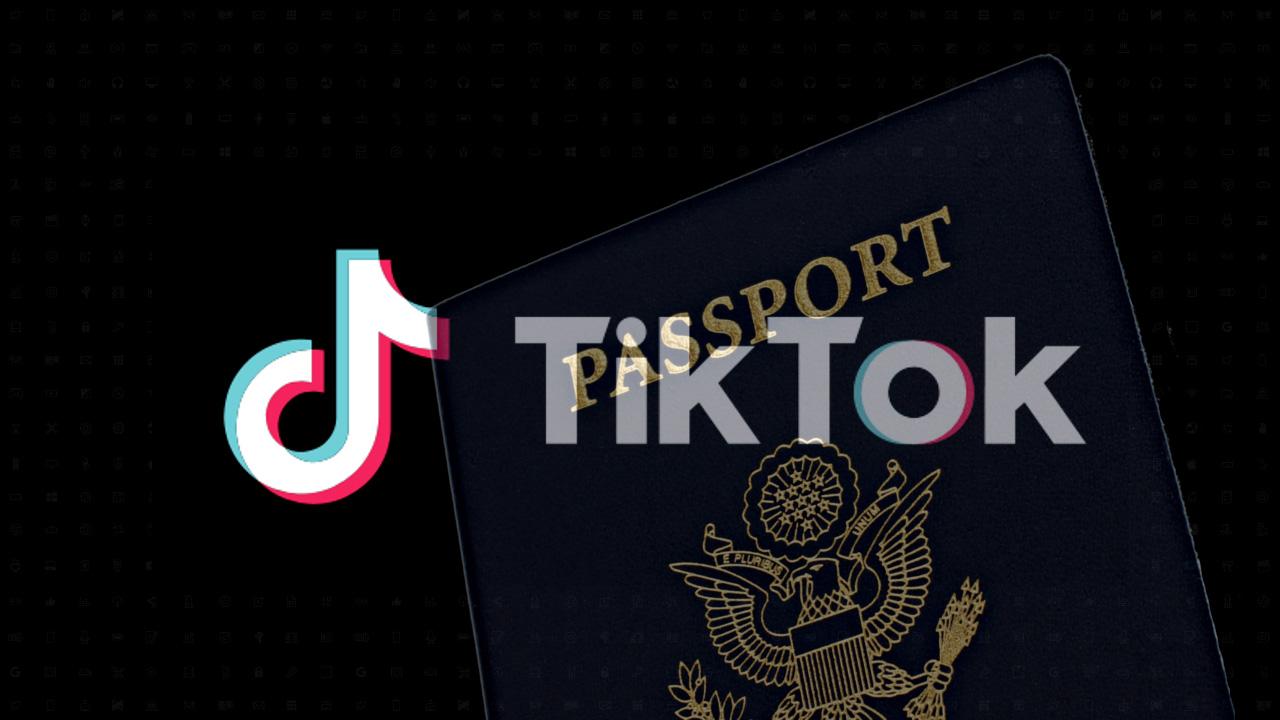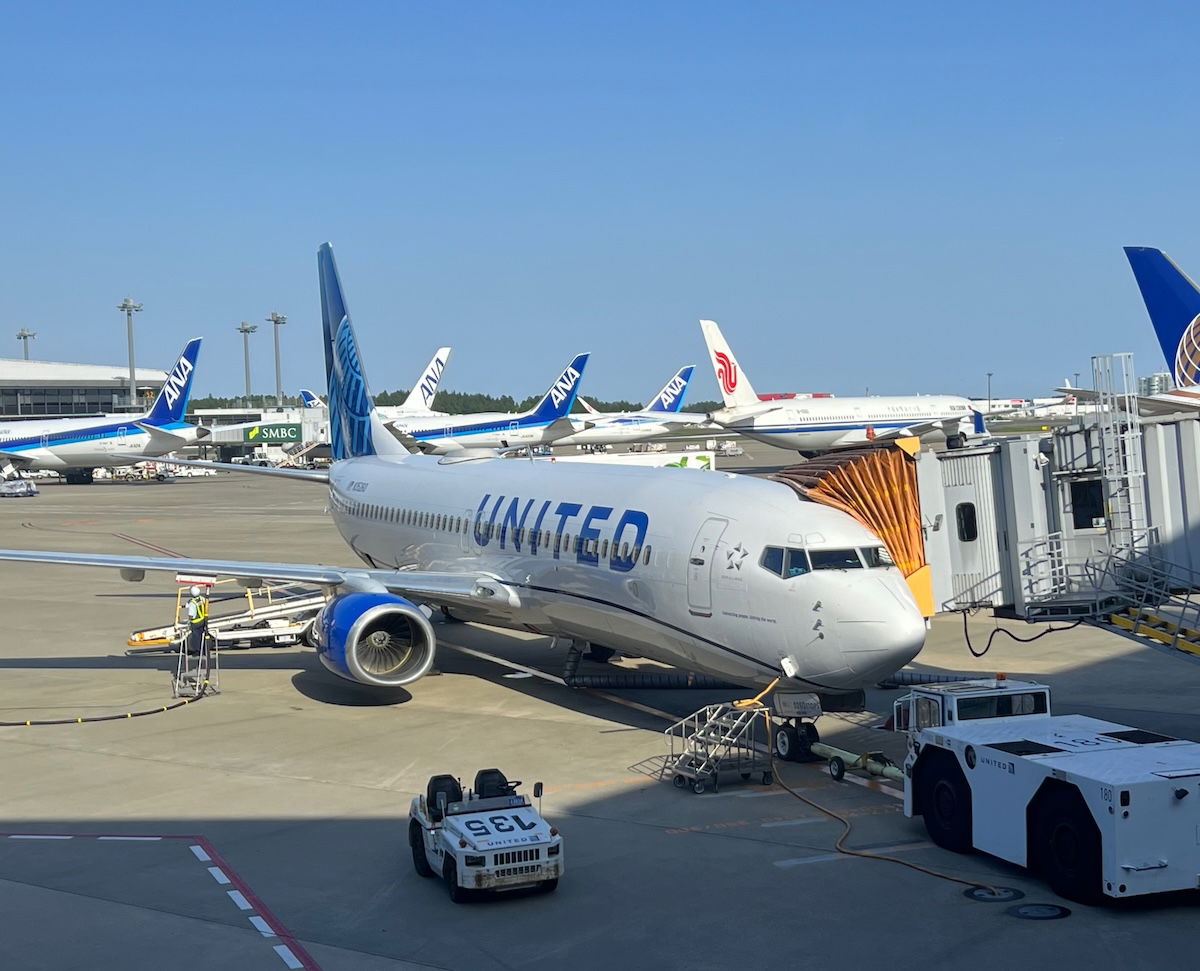Mastering Airport Etiquette: Your Ultimate Guide to Smooth Air Travel
Airports are bustling hubs where thousands of travelers converge daily, each with their own destinations and timelines. Amidst the hustle and bustle, practicing good airport etiquette is essential to ensure a pleasant journey for everyone. From navigating security checks efficiently to respecting personal space, adhering to these unwritten rules can transform your travel experience. This comprehensive guide delves into the nuances of airport manners, offering practical tips and insights for seasoned globetrotters and first-time flyers alike.
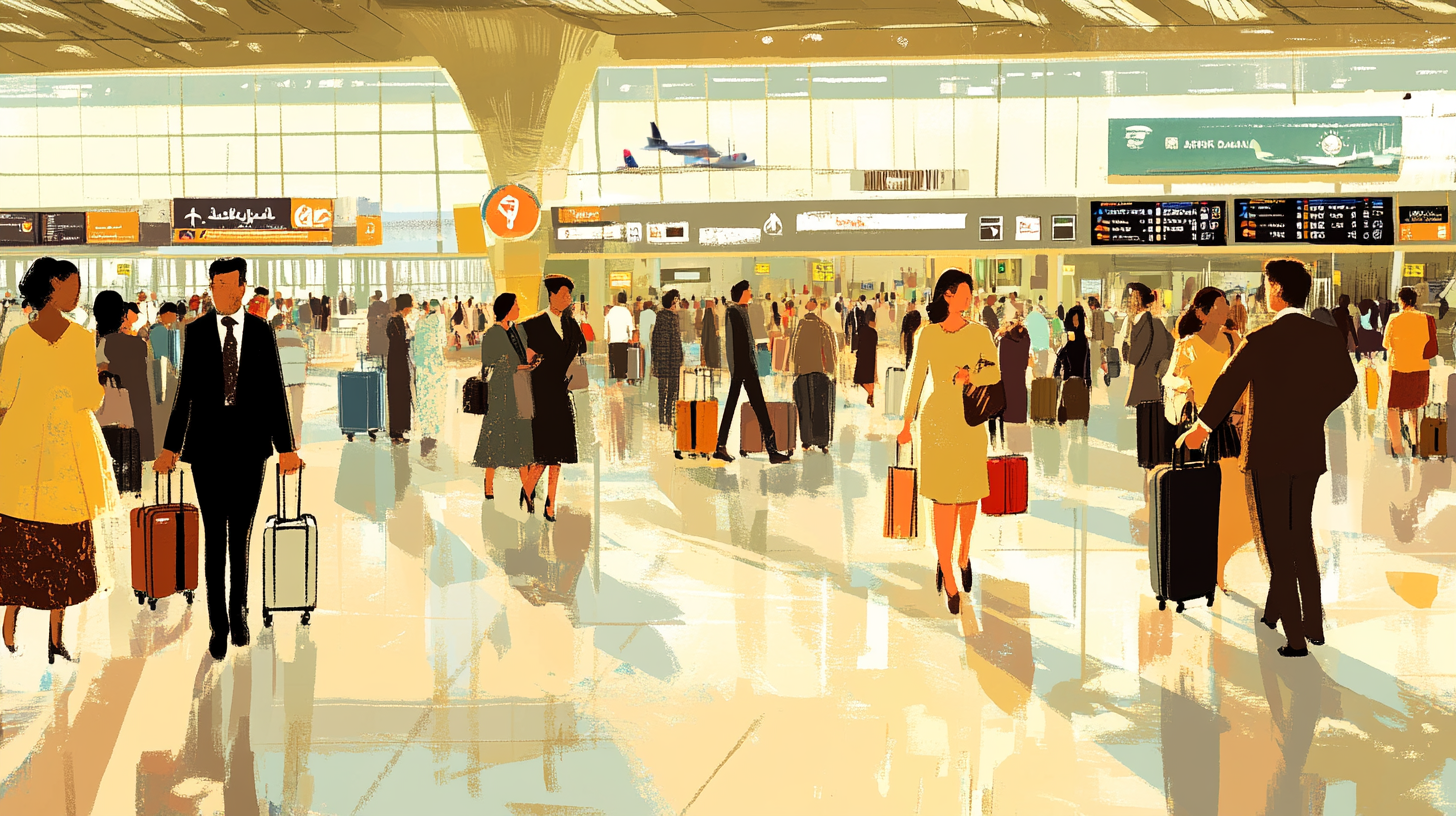
Airports are bustling hubs where thousands of travelers converge daily, each with their own destinations and timelines. Amidst the hustle and bustle, practicing good airport etiquette is essential to ensure a pleasant journey for everyone. From navigating security checks efficiently to respecting personal space, adhering to these unwritten rules can transform your travel experience. For an in-depth understanding, explore this Comprehensive Guide to Airport Etiquette Best Practices . This comprehensive guide delves into the nuances of airport manners, offering practical tips and insights for seasoned globetrotters and first-time flyers alike.
The Ten Commandments of Airport Etiquette
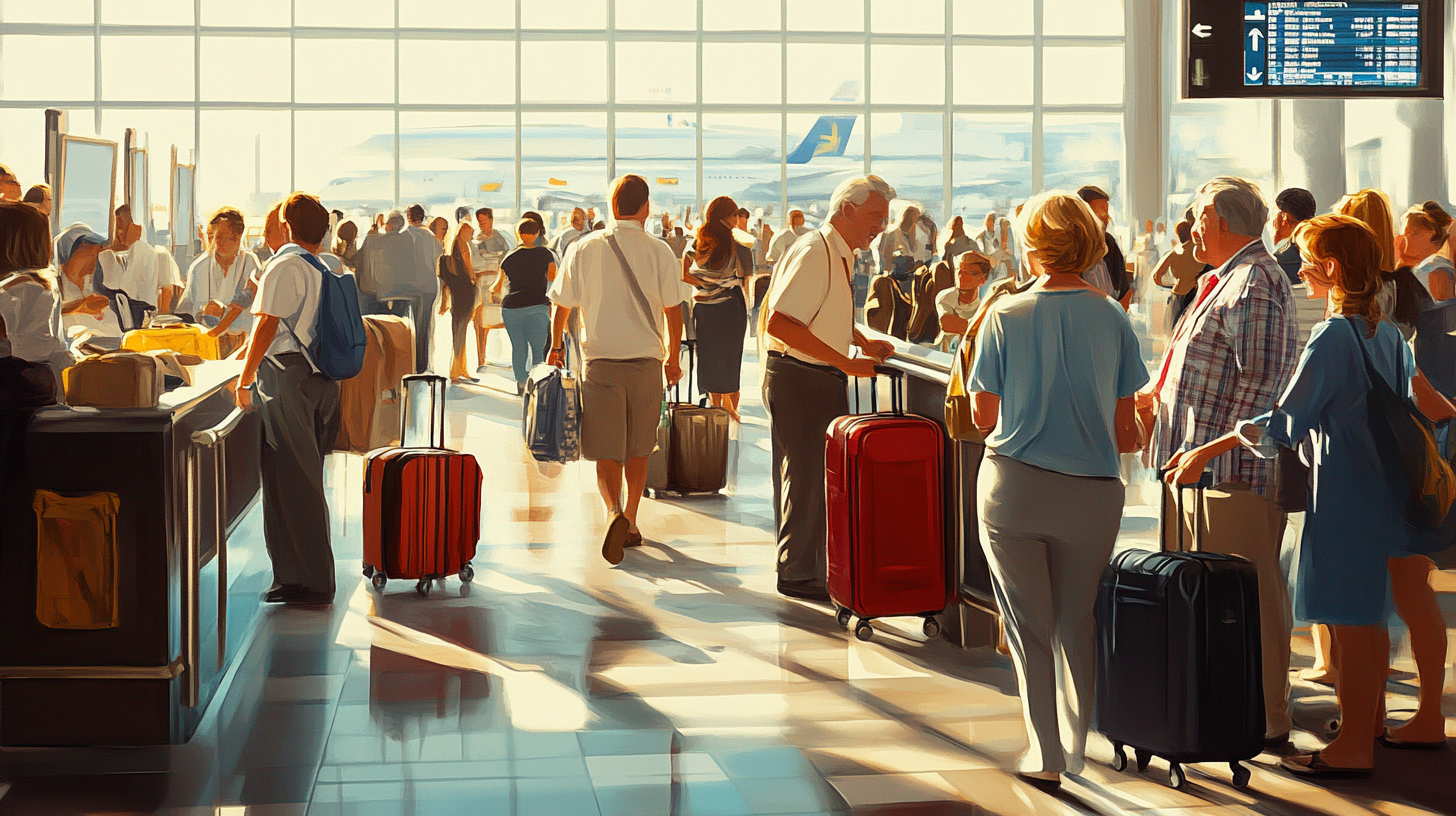
Understanding and adhering to the fundamental principles of flying etiquette can significantly enhance the air travel experience for you and those around you. For a full breakdown of these principles, refer to Essential Air Travel Etiquette Rules for Modern Travelers . Here are the ten essential commandments every traveler should follow:
1. Turn Off Phones When Required

Mobile devices can interfere with aircraft systems, and airlines often request passengers to switch them off or set them to airplane mode. Abiding by these instructions is not just about compliance; it’s about safety. Moreover, keeping your phone volume low or on silent in the airport maintains a peaceful environment, respecting fellow travelers who may be resting or working. For guidelines on responsible device usage, see Mobile Device Etiquette in Airports and Airplanes .
2. Avoid Stinky Foods and Overpowering Fragrances

Strong smells can be overwhelming in confined spaces like airplanes or airport lounges. Opt for neutral-scented foods and moderate your use of perfumes or colognes. This consideration helps prevent discomfort and allergic reactions among other passengers, contributing to a more pleasant atmosphere. Learn more about how scents impact others in Managing Fragrances and Food Odors While Traveling .
3. Manage Children Responsibly

Traveling with children requires extra attention to ensure they remain comfortable and well-behaved. Pack engaging activities and snacks to keep them occupied. Consider utilizing Effective Strategies for Flying with Kids to plan ahead. Teach them about respecting others’ personal space and the importance of staying calm during the journey. This not only eases your stress but also enhances the experience for everyone on board.
4. Respect Lines and Shared Spaces

Airports involve a lot of waiting, and queuing properly is a basic aspect of travel etiquette. Avoid cutting in lines, and be patient as you wait your turn. In seating areas, share armrests and avoid spreading out more than necessary. Understanding the unwritten rules of shared spaces is key. This mindful behavior ensures fairness and comfort in communal spaces. For insights, refer to Navigating Shared Spaces in Crowded Airports .
Be Prepared: Knowledge is Power

Preparation is key to a seamless airport experience. Knowing the layout of the airport and being aware of your flight details can save you time and reduce stress. Here’s how you can be well-prepared:
1. Arrive Early and Pack Light
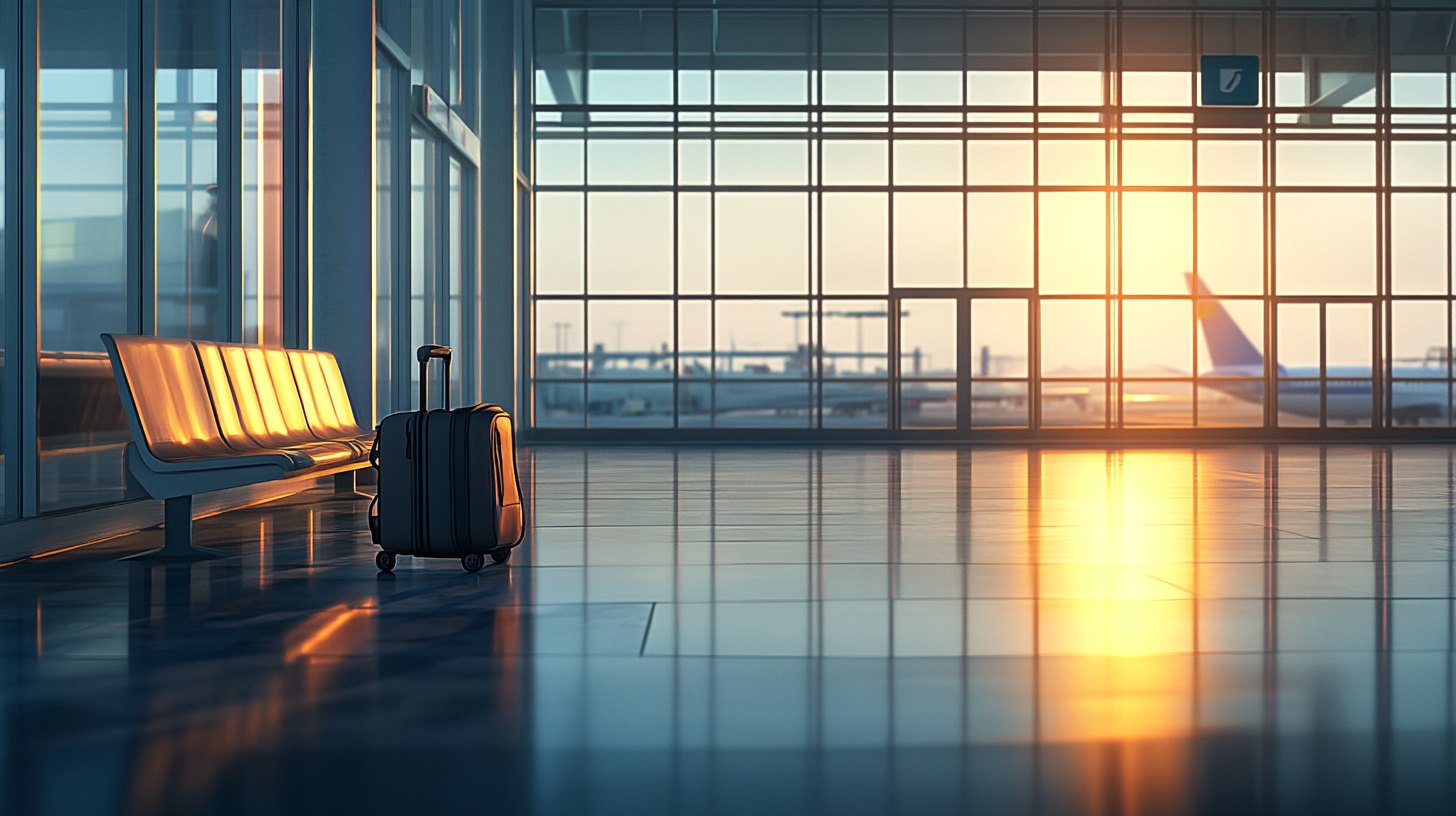
Arriving at the airport at least two hours before your flight allows ample time for check-in, security, and unexpected delays. Packing lightly not only speeds up your movement through the airport but also eases the burden of managing luggage. Remember, adhering to TSA regulations on baggage can prevent unnecessary hassles. Consider reviewing the Complete Guide to TSA Baggage Policies before you pack.
2. Navigating Security Efficiently

Before reaching the security checkpoint, have your boarding pass and ID ready. Wear easily removable shoes and minimal metal accessories to expedite the screening process. Familiarize yourself with the TSA’s 3-1-1 rule for liquids to ensure your carry-on complies with security standards. Packing your liquids in a clear, resealable plastic bag before arriving at the airport can save time. For a list of prohibited items, consult the Official TSA Prohibited Items List .
3. Managing Personal Belongings

Keep your personal items organized and within your control at all times. Use a single envelope or pouch for travel documents to avoid fumbling at critical moments. Utilizing Travel Accessories for Efficient Organization can help keep your belongings in order. In the boarding area, avoid occupying extra seats with your luggage, especially during peak travel times. This courtesy allows others to find seating and keeps common areas tidy.
Respecting Personal Space and Shared Areas

Airports are crowded environments, making respect for personal space crucial. Observing these practices can significantly improve the collective travel experience:
1. Queuing Properly
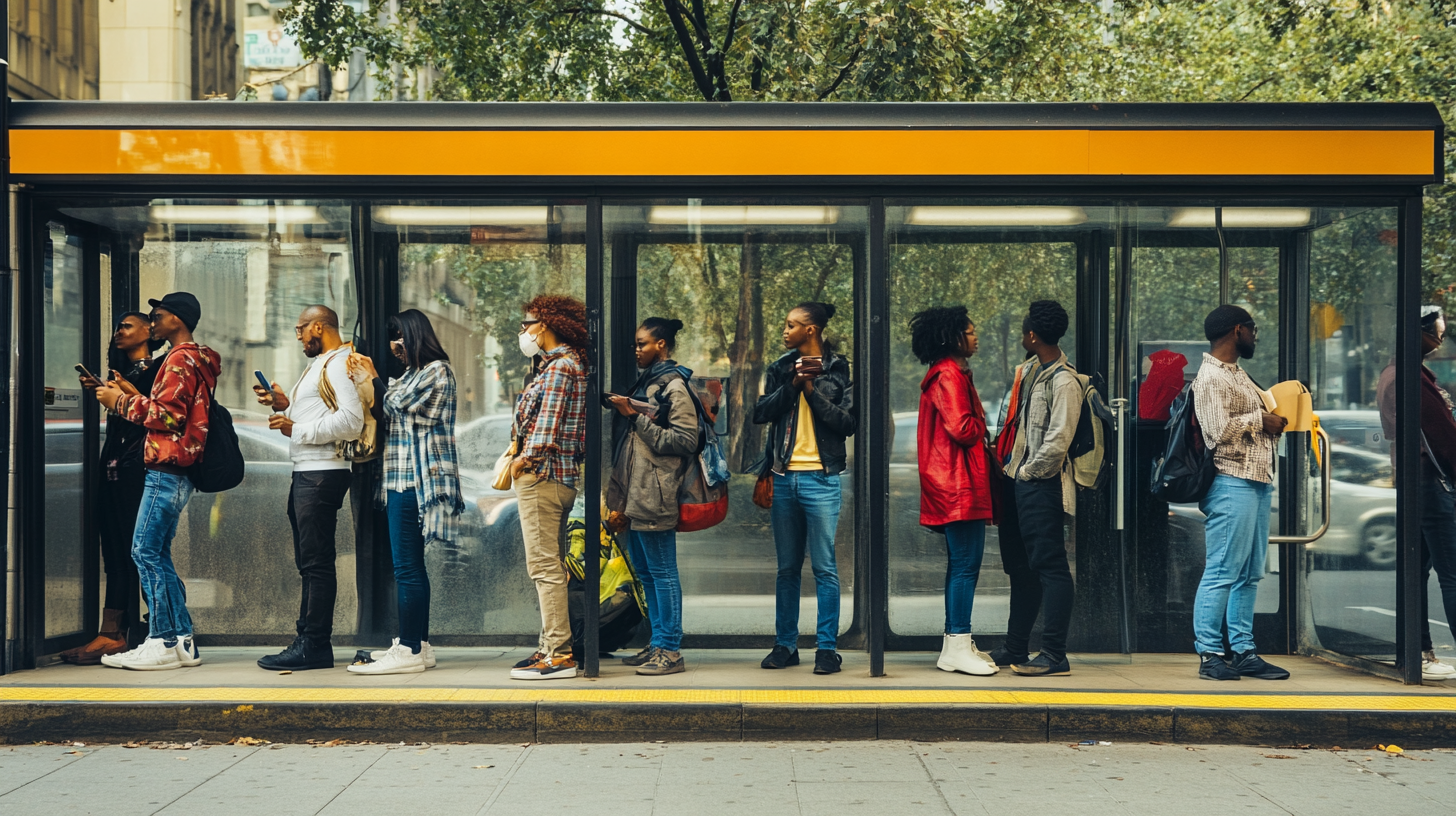
Maintain a reasonable distance from the person in front of you in line. This practice respects personal boundaries and prevents feelings of crowding or discomfort. Remember, cultural norms regarding personal space can vary. To learn more about navigating these differences, see Cultural Considerations for Personal Space in Airports . It’s a simple yet effective way to show consideration for others.
2. Armrest Etiquette
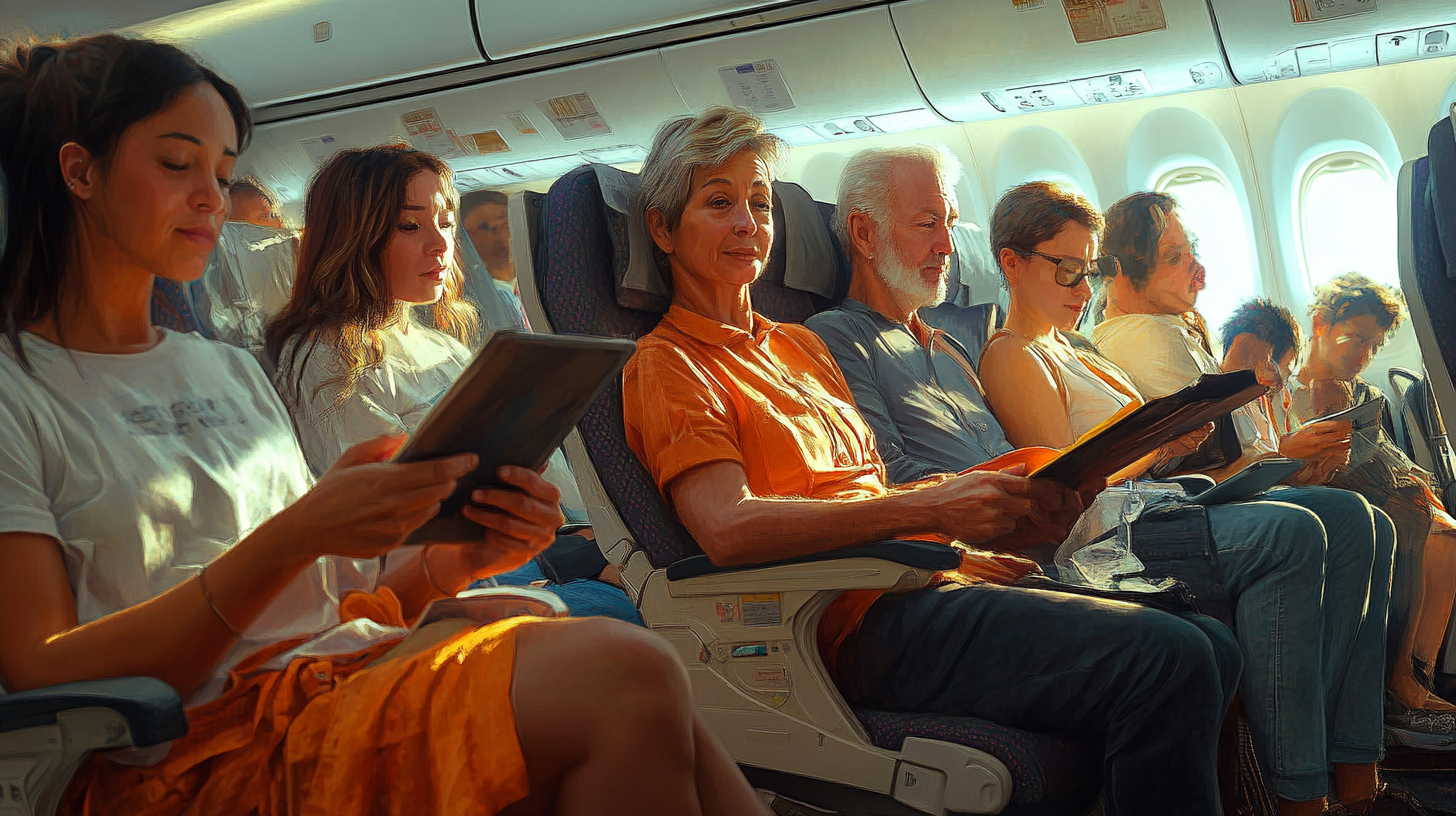
Seating areas, especially at gates and on planes, can be tight. The unwritten rule is that the person in the middle seat gets both armrests, balancing out the less desirable seating position. Observing this norm can make everyone’s journey more comfortable. For more on in-flight etiquette, refer to Etiquette Tips for a Comfortable Flight .
3. Restroom Decorum
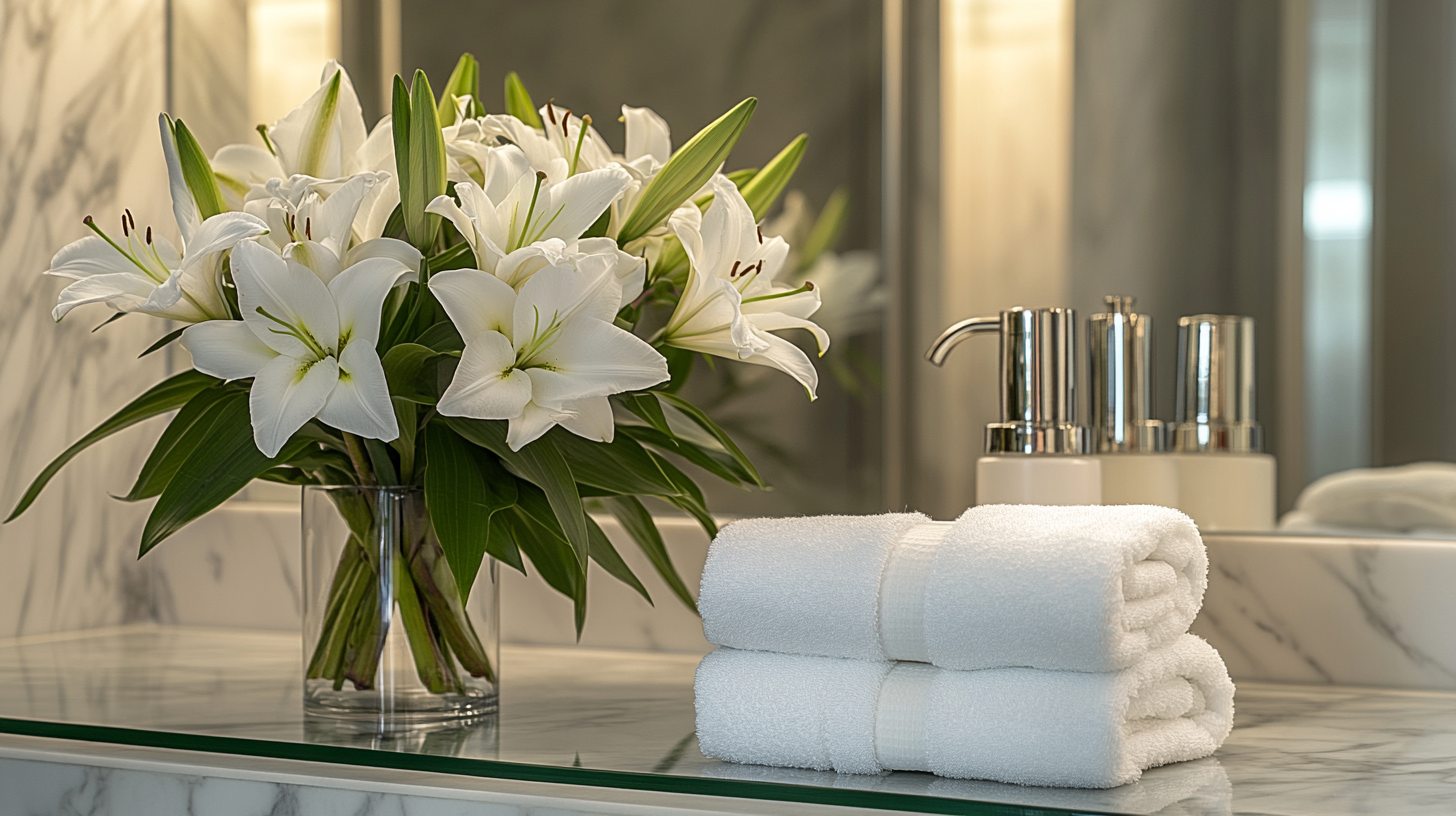
Restrooms are shared spaces that require attentiveness. Keep your belongings secure and out of the way to prevent tripping hazards. Practice good hygiene and leave the space clean for the next user. If you notice someone in urgent need, offering them priority is a kind gesture that embodies excellent airport manners. For additional restroom etiquette tips, check out Proper Restroom Use in Public Spaces .
Technology and Noise Control

In an age where devices are ubiquitous, managing their use thoughtfully is part of modern air travel tips:
1. Keeping Volumes Low

Airports are public spaces where loud conversations or media can be disruptive. Use headphones when listening to music or watching videos, and be mindful of your speaking volume, especially during phone calls. This consideration ensures a calm environment conducive to relaxation or focus. Investing in noise-canceling headphones can enhance your experience; explore options in Top Noise-Canceling Headphones for Travelers .
2. Using Headphones

Investing in a good pair of headphones not only enhances your entertainment experience but also prevents your audio from disturbing others. Avoid using speakerphone or playing media out loud in common areas, as it can be intrusive and annoying to those around you. For recommendations, see Best Headphones for Air Travel .
3. Conducting Meetings Appropriately

If you need to participate in a conference call or meeting, find a designated area or a quieter corner of the airport. Being mindful of your surroundings during professional interactions demonstrates respect for both your colleagues and fellow travelers. Look into Quiet Zones and Business Lounges in Airports for suitable spaces.
Boarding and Deplaning Protocols
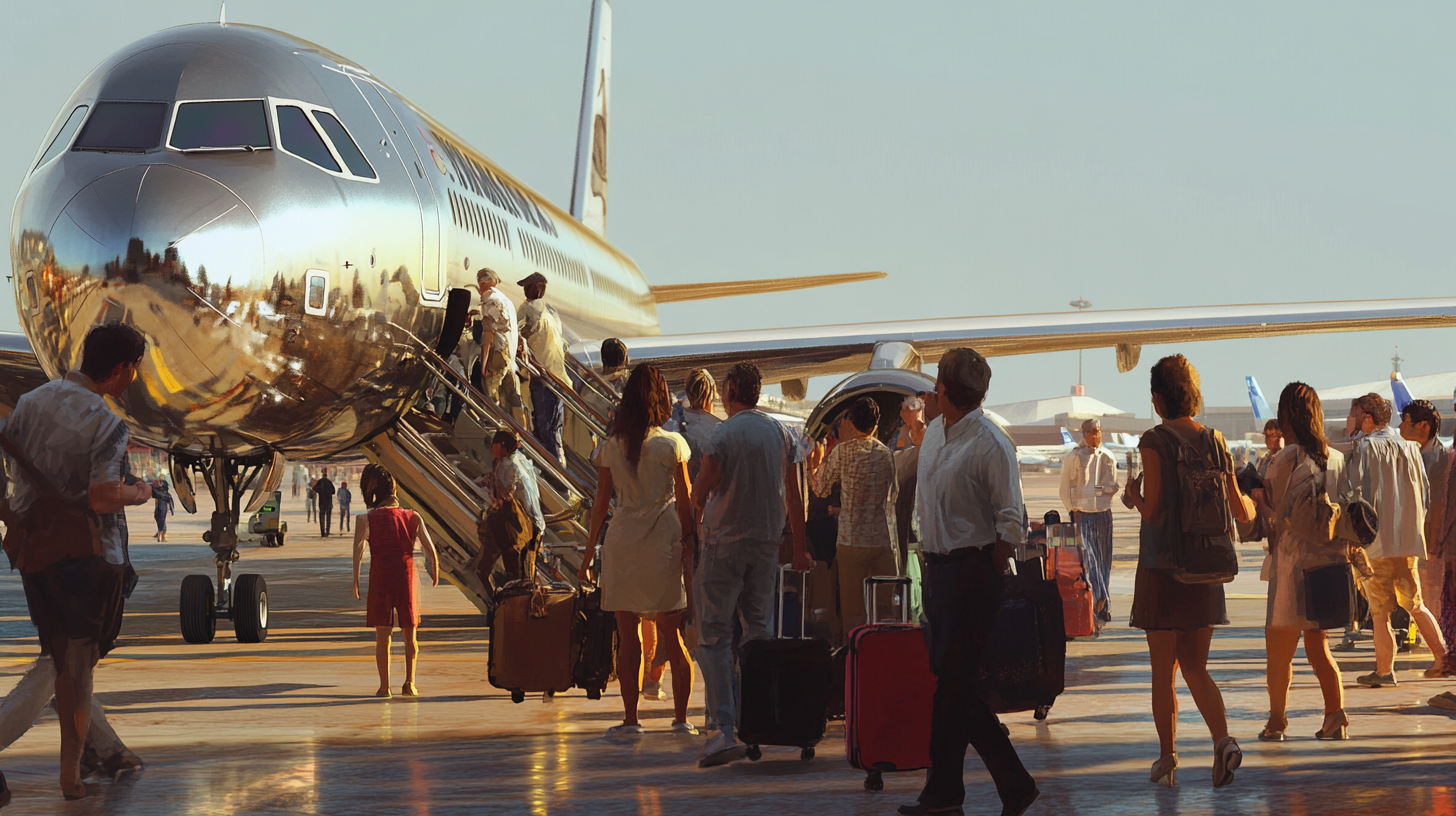
Efficient boarding and deplaning hinge on everyone following established procedures. These guidelines help maintain order and timeliness:
1. Waiting for Your Boarding Group
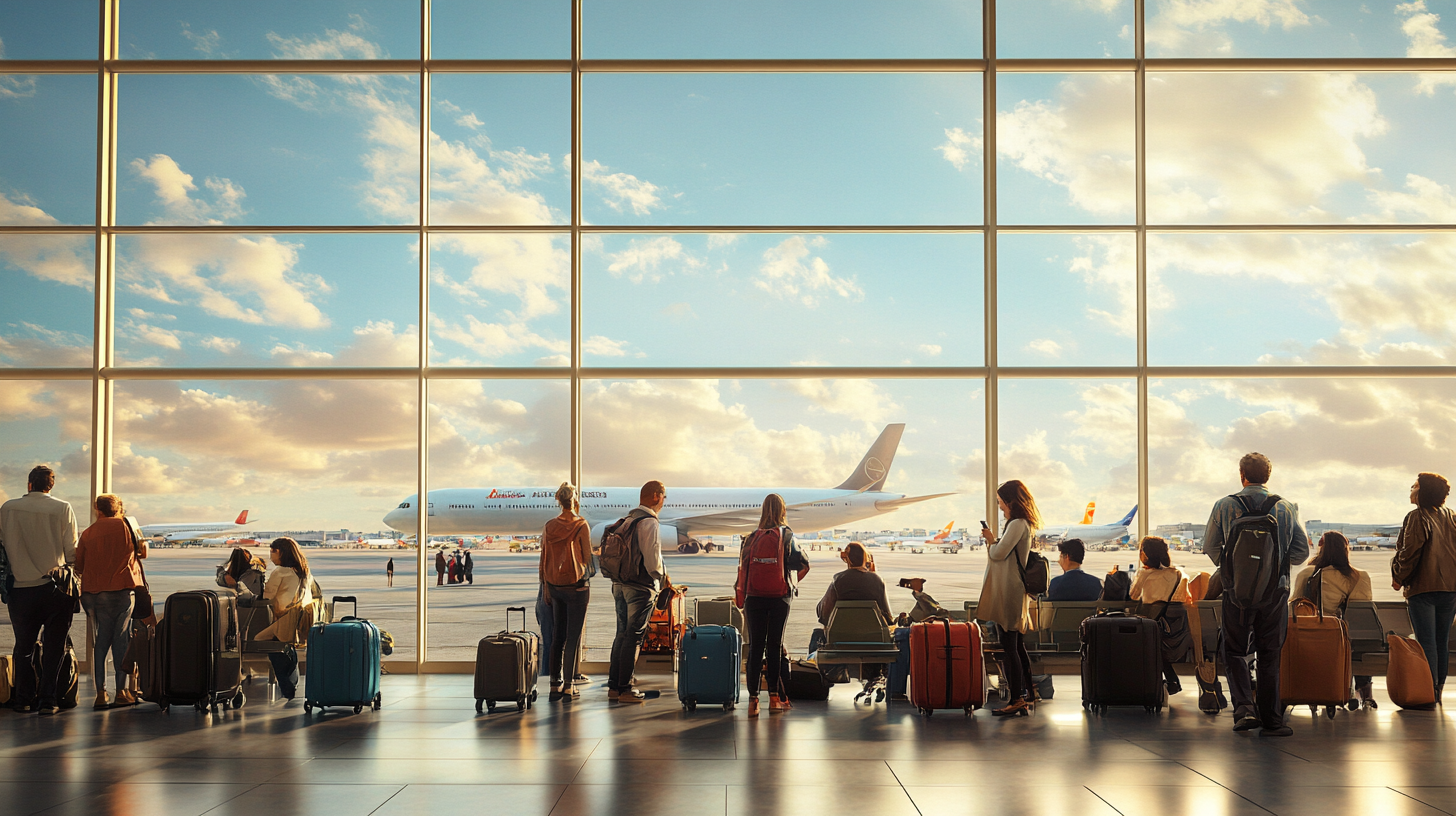
Airlines typically board passengers by groups or zones. Waiting until your group is called prevents congestion at the gate and allows those with priority boarding, such as families with young children or passengers needing assistance, to board smoothly. This patience contributes to an overall efficient process. For more details, read Understanding Airline Boarding Procedures .
2. Not Blocking Aisles

When boarding the plane, move promptly to your seat and stow your carry-on luggage efficiently. Avoid lingering in the aisle, which can cause delays and frustration among other passengers. Similarly, when deplaning, gather your belongings swiftly to keep the line moving. Tips on efficient boarding can be found in How to Board and Exit Planes Smoothly .
3. Exiting by Rows
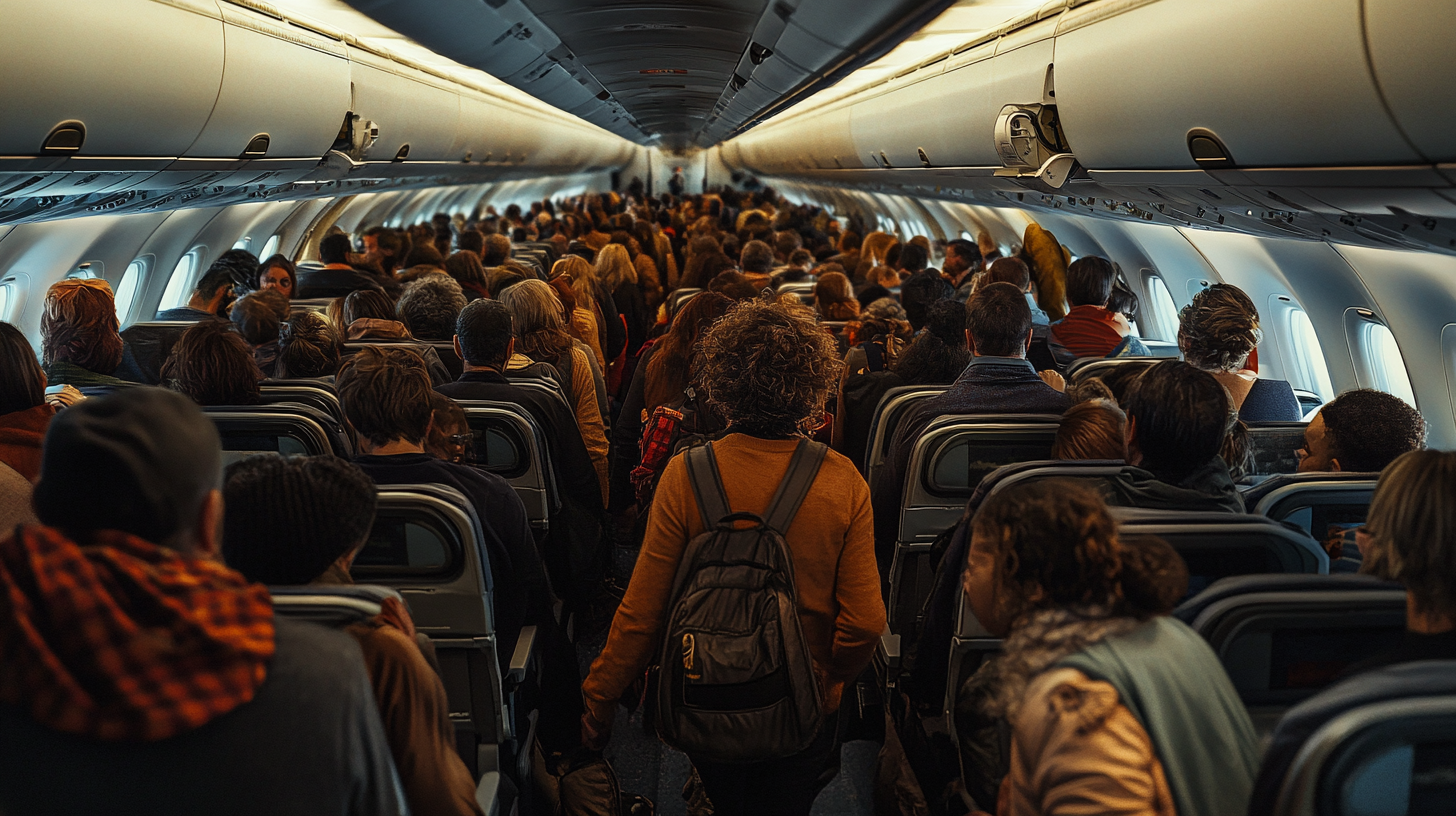
Deplaning typically proceeds row by row from the front to the back. Wait for the row ahead of you to start moving before stepping into the aisle. This orderly exit strategy ensures that everyone can disembark smoothly and make their connections on time. For additional advice, consult Proper Etiquette for Exiting an Airplane .
Managing Children and Pets

Traveling with dependents adds layers of responsibility. Ensuring their comfort and behavior is respectful to others is a hallmark of good travel etiquette:
1. Keeping Children Occupied and Behaved

Prepare activities, snacks, and comfort items for children to keep them engaged during waits and flights. Explore Best Travel Games and Activities for Children on Airplanes for suitable options. Explain the importance of quiet voices and respecting others’ space. Positive reinforcement and patience go a long way in managing their behavior in a bustling airport setting.
2. Consideration for Other Passengers

Be mindful of how your children’s actions affect those around you. Prevent them from kicking seats, running in busy areas, or engaging in loud play. Fellow travelers will appreciate the effort, and it sets a good example for your children regarding respectful public behavior. For more guidance, see Teaching Kids Air Travel Etiquette .
3. Traveling with Pets

If you’re bringing a pet, ensure they are comfortable and secure in an appropriate carrier. Be aware of and comply with airline policies regarding animals. Keeping your pet calm minimizes disturbances and ensures a smoother experience for all passengers. Check out the Comprehensive Guide to Traveling with Pets by Air for detailed information on preparing your pet for the journey.
Food and Fragrances

What you bring into shared spaces can impact others significantly. Here’s how to make considerate choices:
1. Avoiding Strong Smells

Refrain from bringing foods with potent odors, such as tuna or fast food with strong spices. These smells can linger and may be unpleasant for others. Opt for neutral snacks that won’t cause discomfort or trigger allergies among fellow travelers. For suggestions, refer to Travel-Friendly Snacks for Airplanes .
2. Being Mindful of Allergies

Avoid foods containing common allergens like peanuts if possible. While airlines have protocols for severe allergies, your consideration can prevent potential health risks. If you must bring such items, consume them discreetly and ensure wrappers are disposed of properly. Learn more in Understanding Food Allergies When Traveling .
3. Moderating Use of Perfumes and Sprays

Strong fragrances can cause headaches or allergic reactions in confined spaces. Apply perfumes sparingly before leaving home rather than reapplying in the airport or on the plane. This small adjustment shows empathy toward the sensitivities of others. For additional insight, read Fragrance Etiquette in Public Spaces .
Dealing with Security and Staff
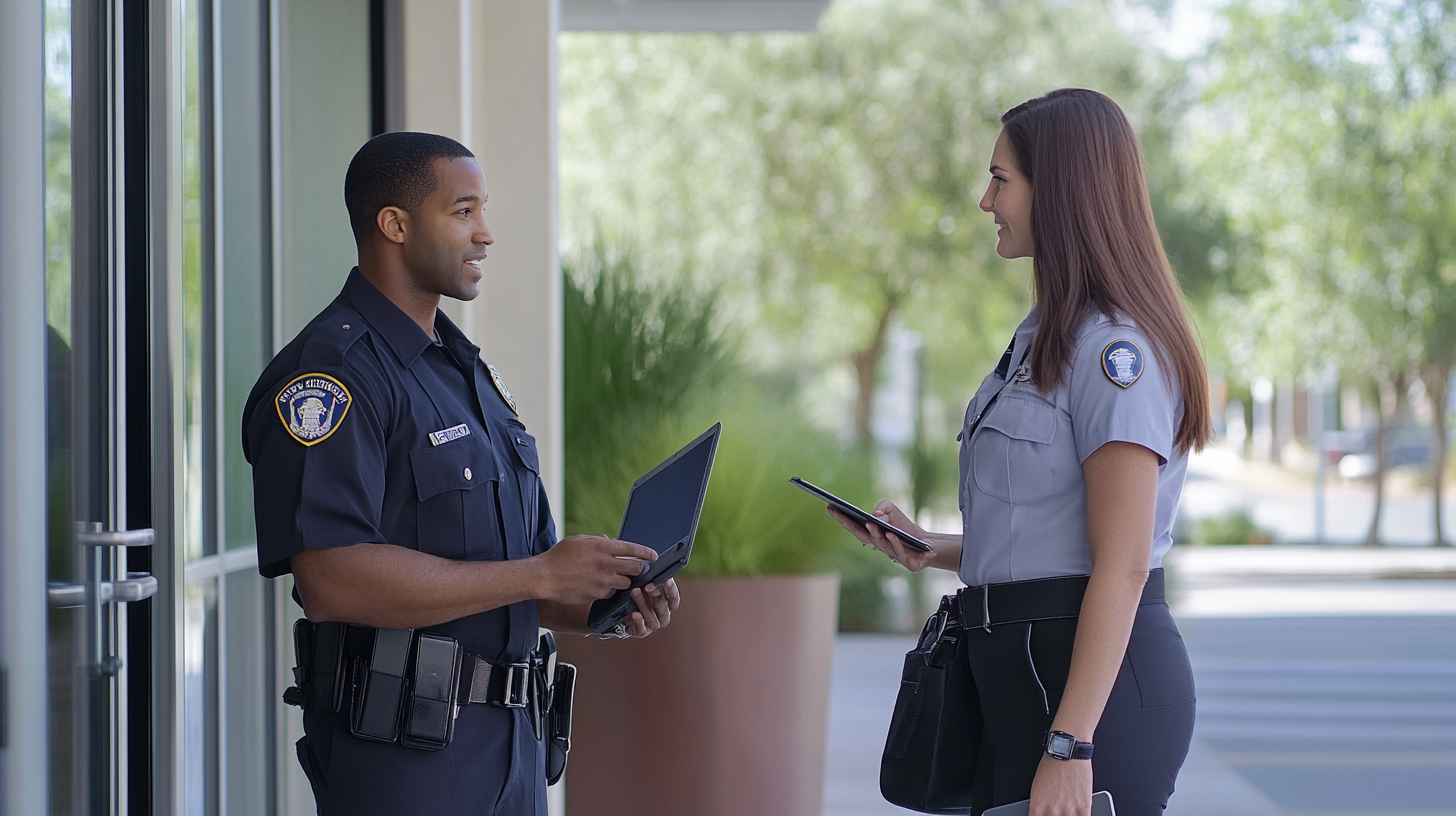
Interactions with airport security and staff are integral to your travel experience. Professionalism and courtesy are paramount:
1. Following Instructions

Listen attentively to TSA officers and comply promptly with their requests. Arguing or deviating from protocols can cause delays not just for you, but for everyone in line. Trust that these procedures are in place for the safety of all. For a better understanding, see How to Navigate TSA Security Checkpoints .
2. Being Courteous to TSA Officers
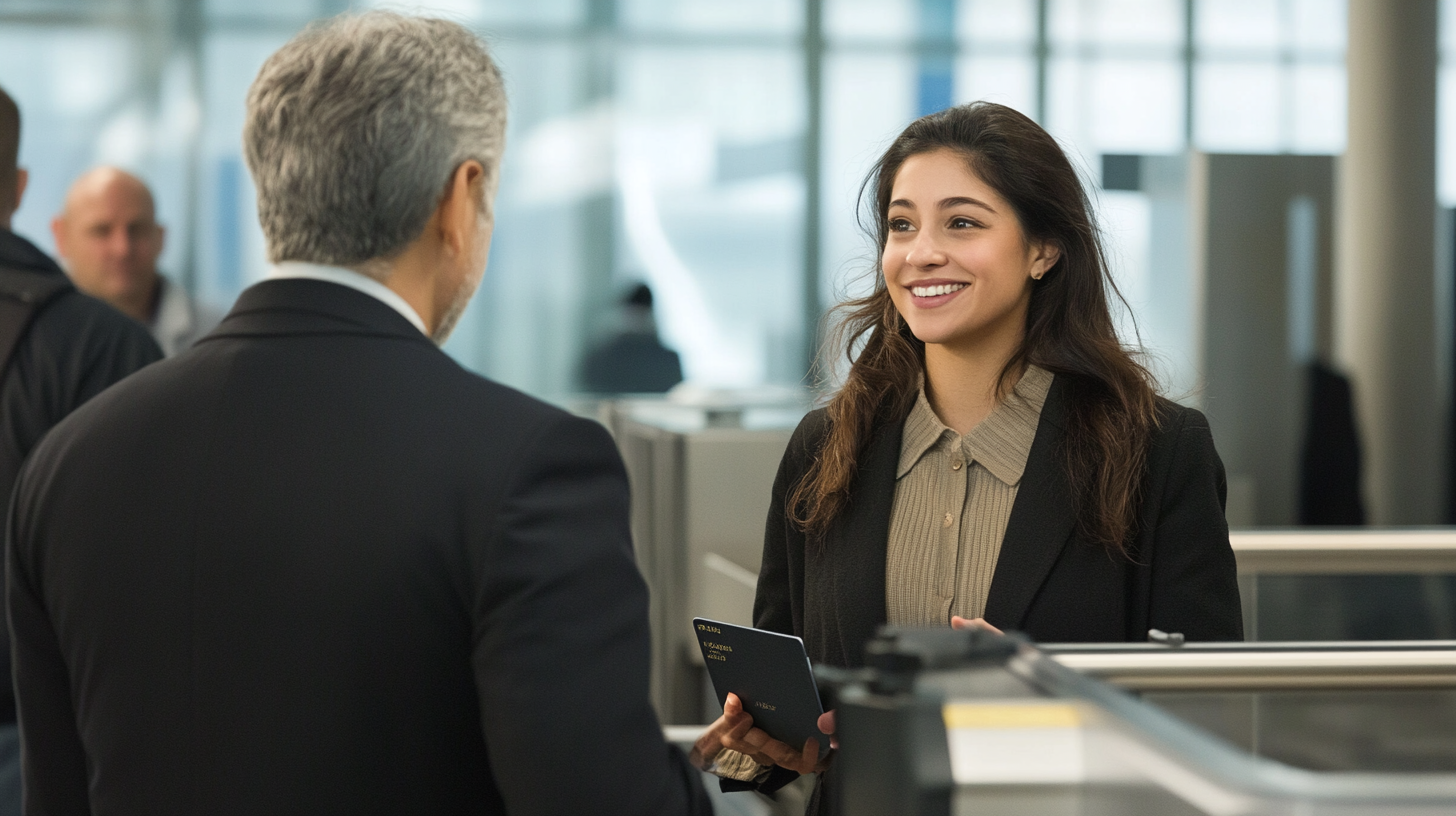
Security personnel often work long hours in high-pressure environments. A simple greeting or polite acknowledgment can make their day smoother. Remember that they’re there to ensure everyone’s safety, including yours. For tips on positive interactions, refer to Building Good Rapport with Airport Staff .
3. When to Request a Supervisor
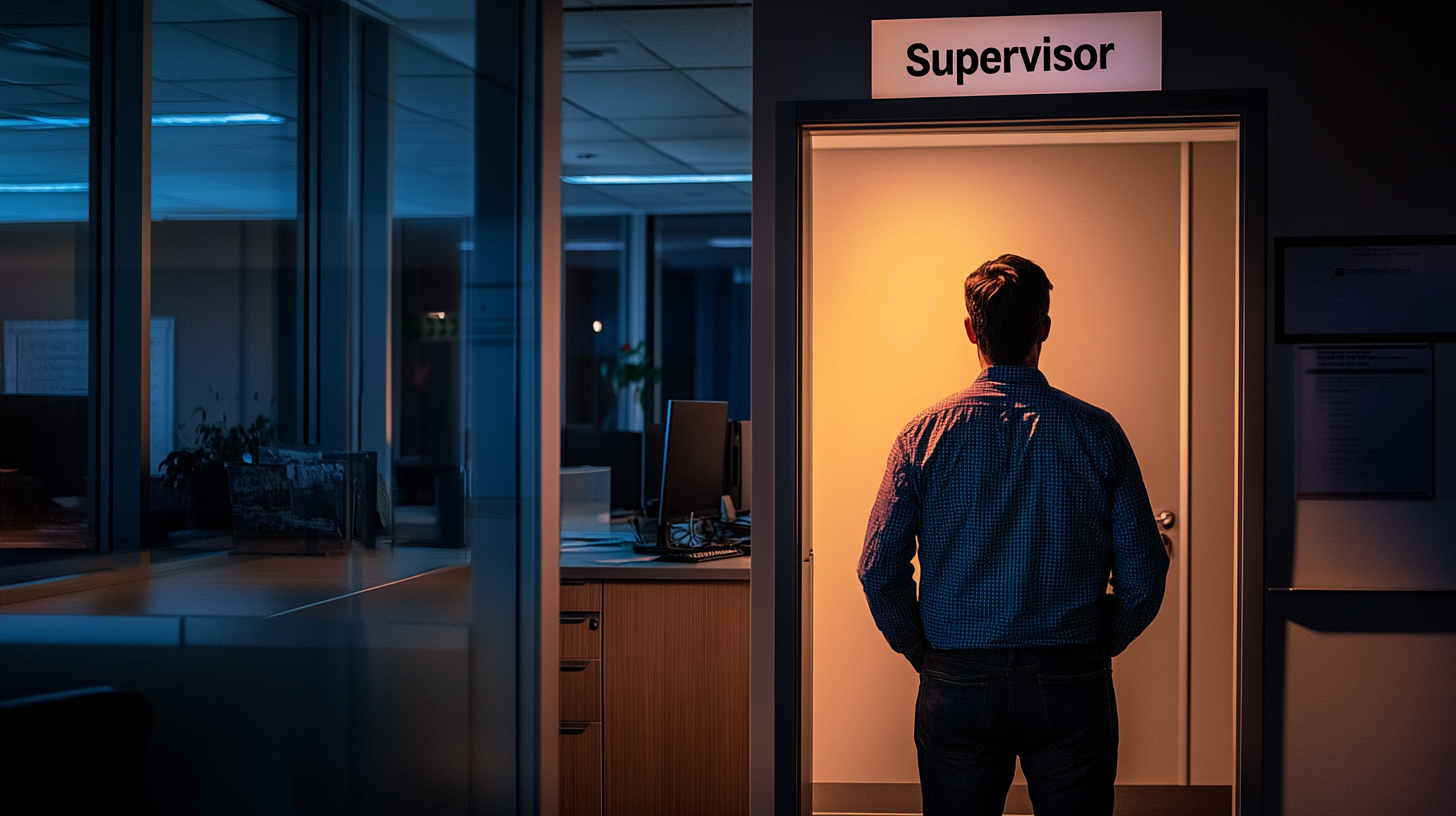
If you encounter an issue during security screening, remain calm. Politely ask to speak with a supervisor if necessary. Raising your voice or expressing frustration aggressively can escalate the situation unnecessarily and may lead to further delays. For advice on handling disputes, consult Resolving Issues with Airport Security .
Special Situations

Certain times of the year or unique circumstances require additional awareness and adaptability:
1. During Holidays and Peak Travel Times
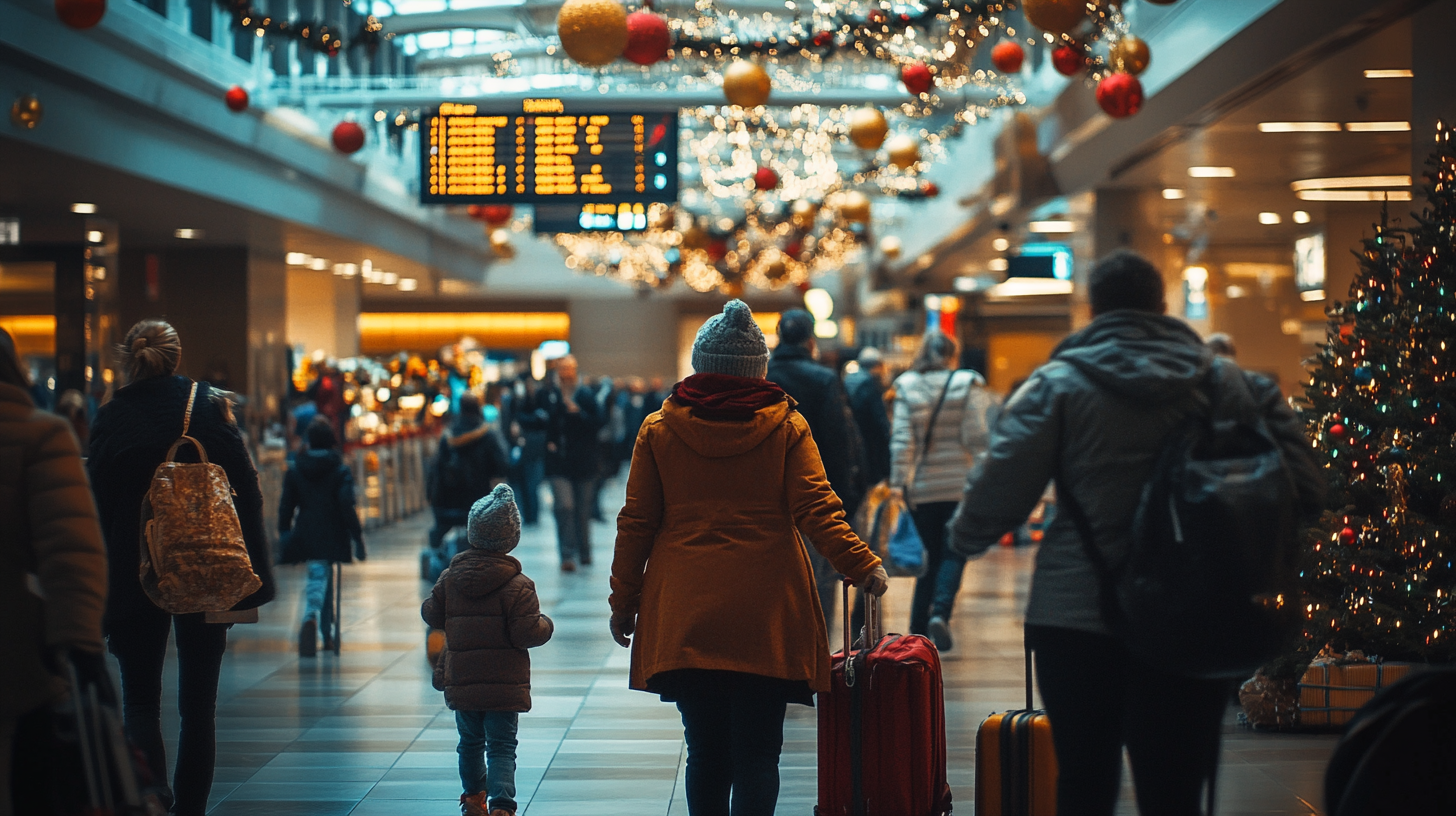
Airports can be exceptionally crowded during holidays like Thanksgiving. Anticipate longer lines and wait times. Patience and understanding during these periods contribute to a more pleasant atmosphere despite increased stress levels. For strategies, read Surviving Holiday Air Travel .
2. Cultural Sensitivities

Remember that airports are international spaces where you may encounter diverse cultures. Be respectful of different customs and behaviors. This openness fosters a welcoming environment and enriches your own travel experience. Enhance your cultural awareness with Guide to Cultural Sensitivity in International Airports .
3. Handling Delays and Cancellations
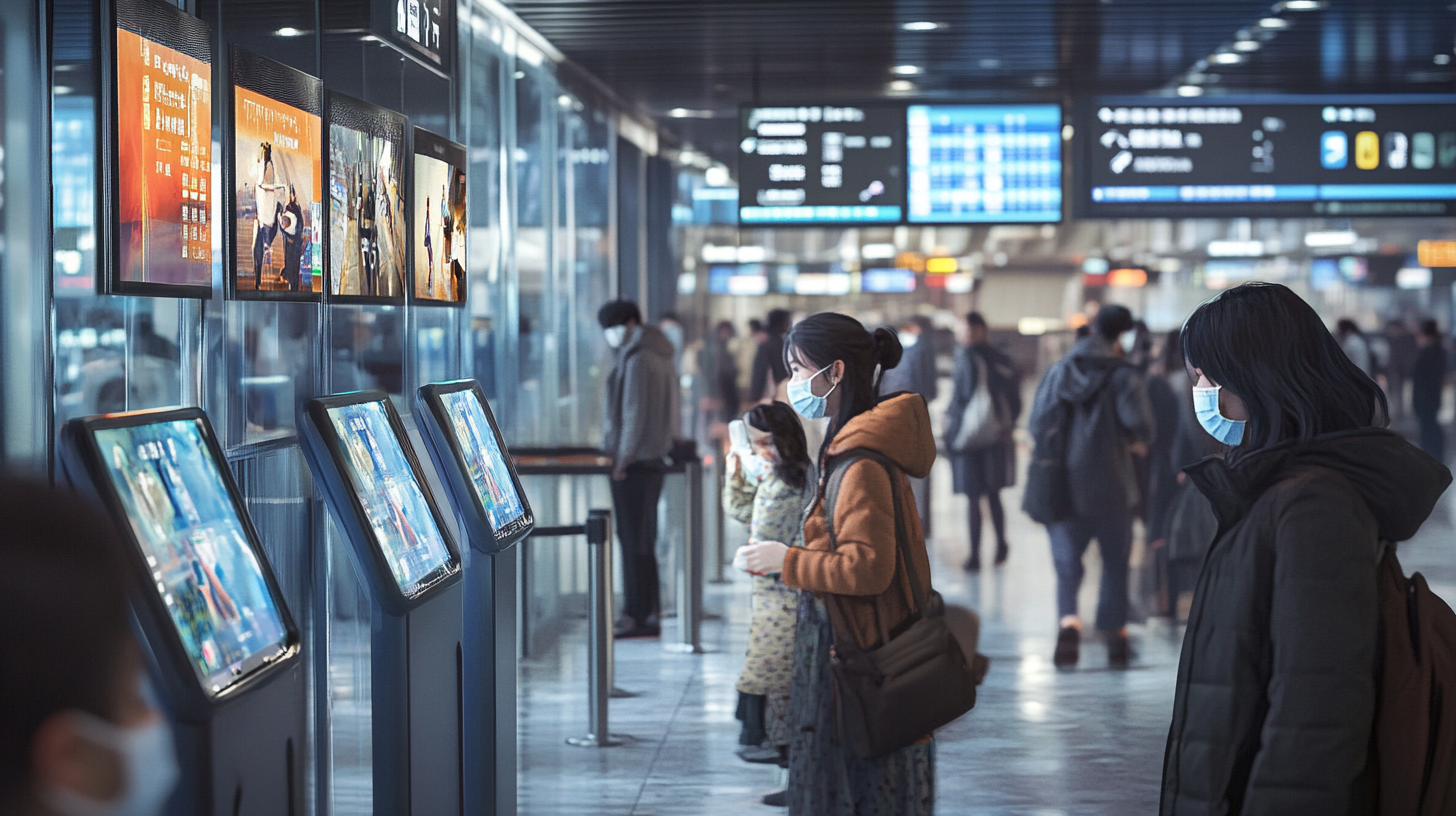
Flight disruptions are sometimes unavoidable. Instead of venting frustration at airline staff, who are often not at fault, seek information calmly and explore alternatives. Your composed demeanor can make it easier to receive assistance and find solutions. For coping strategies, see Dealing with Flight Delays and Cancellations .
Health and Hygiene Etiquette in Airports
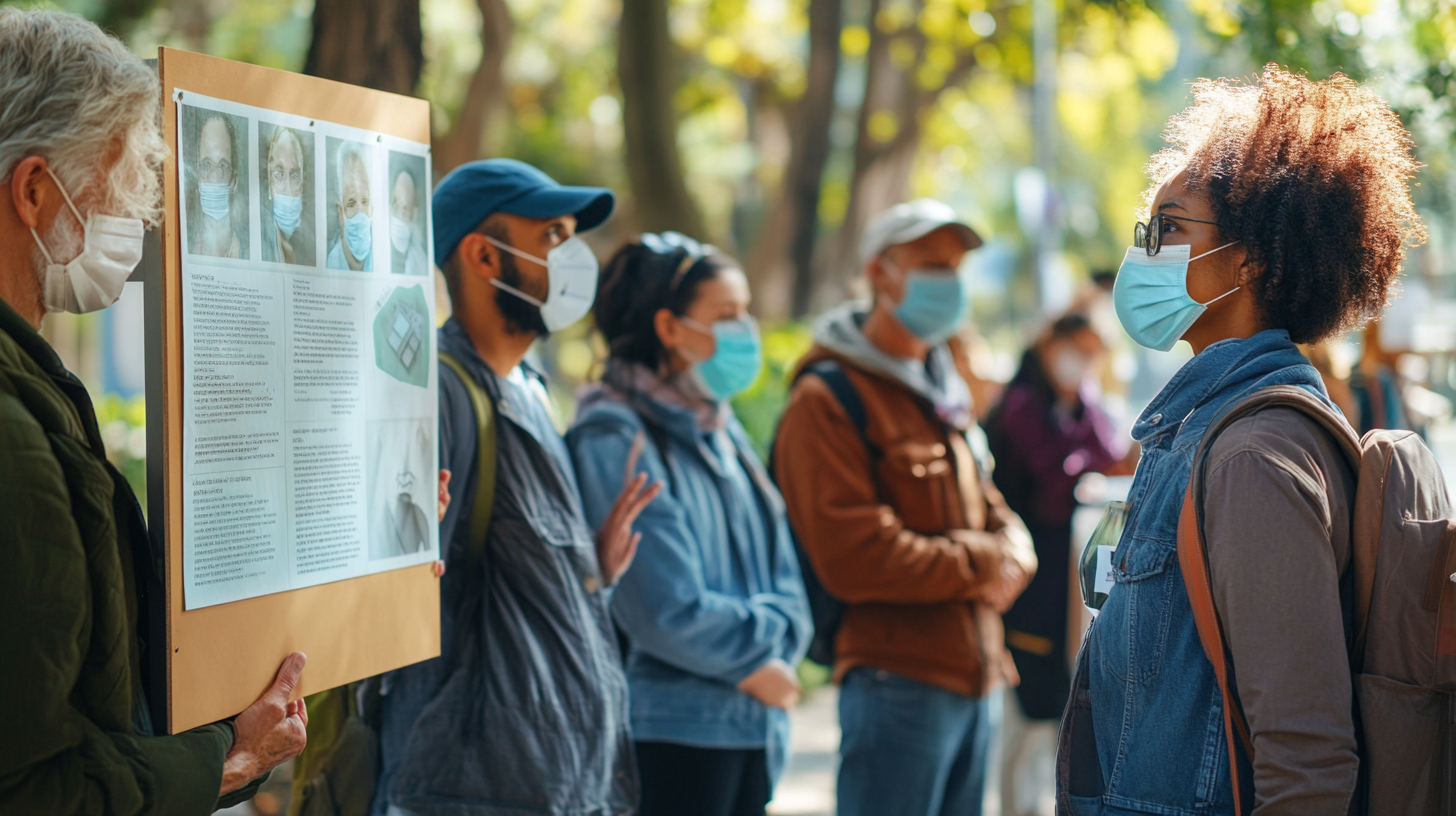
Maintaining health and hygiene is crucial in crowded spaces like airports. Here are some guidelines to ensure your well-being and that of others:
1. Follow Health Guidelines

Stay updated on the latest health advisories and regulations, such as mask mandates or vaccination requirements. For current information, consult the Official CDC Travel Health Notices .
2. Practice Good Hygiene

Regularly wash your hands or use hand sanitizer, especially after touching common surfaces. Cover your mouth and nose when coughing or sneezing. For more tips, see Best Practices for Maintaining Hygiene While Traveling .
3. Stay Home if Unwell

If you’re feeling unwell, it’s considerate to postpone your travel. This action protects others from potential illness. For guidance on travel health considerations, refer to When to Avoid Traveling Due to Illness .
Final Thoughts
Practicing good airport etiquette goes beyond personal convenience; it’s about fostering a community of respectful and considerate travelers. Each act of courtesy, from sharing an armrest to patiently waiting your turn, contributes to an environment where everyone can navigate their journeys with ease.
Follow us back to BoardingArea for more insights on navigating the future of air travel. Your commitment to respectful and efficient travel etiquette can make all the difference, transforming a potentially stressful situation into a seamless and enjoyable part of your journey.
This blog post was AI-written / human assisted.




















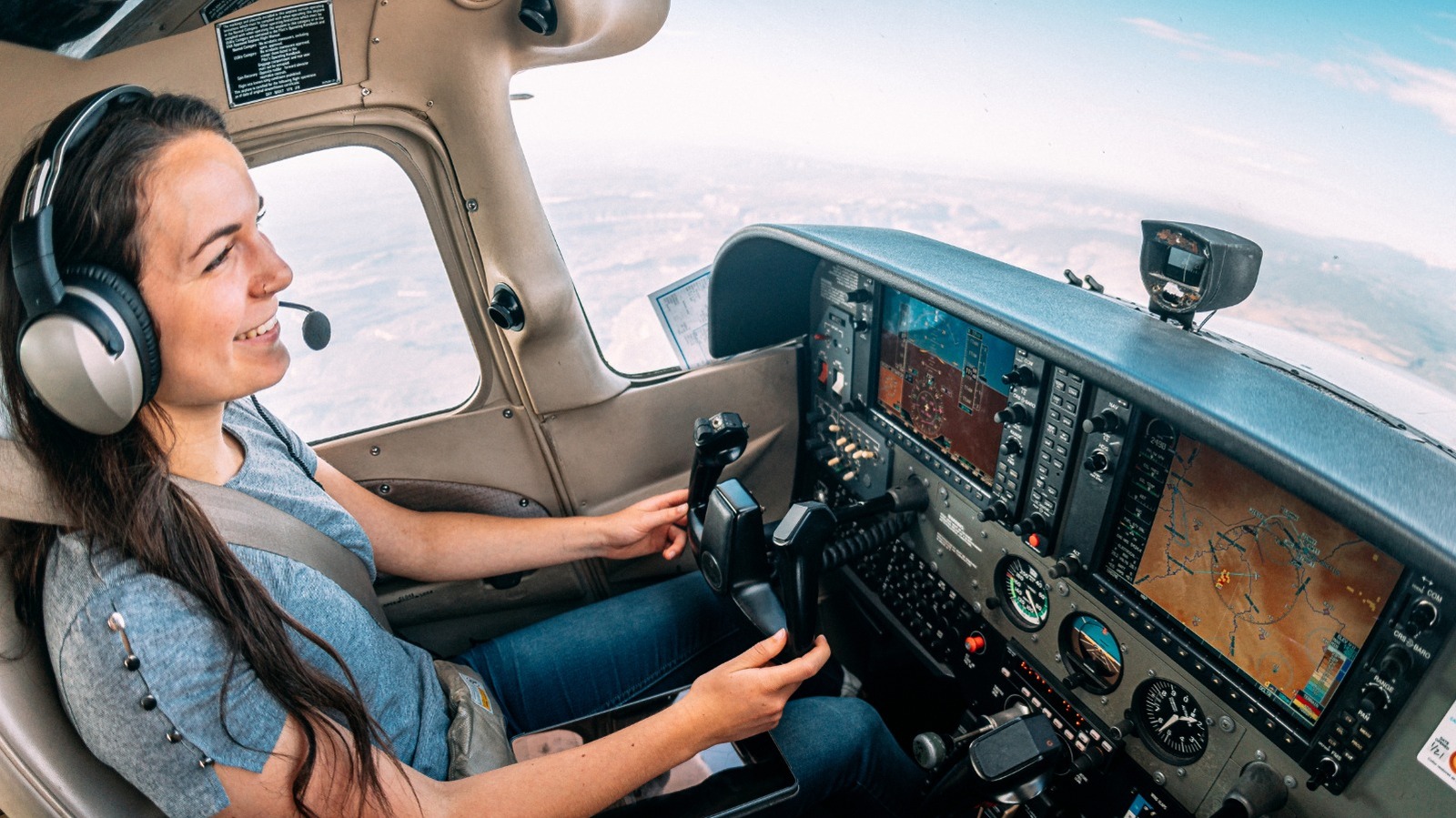

/cdn.vox-cdn.com/uploads/chorus_asset/file/25829976/STK051_TIKTOKBAN_B_CVirginia_B.jpg)













/cdn.vox-cdn.com/uploads/chorus_asset/file/24435316/STK150_Bing_AI_Chatbot_02.jpg)









